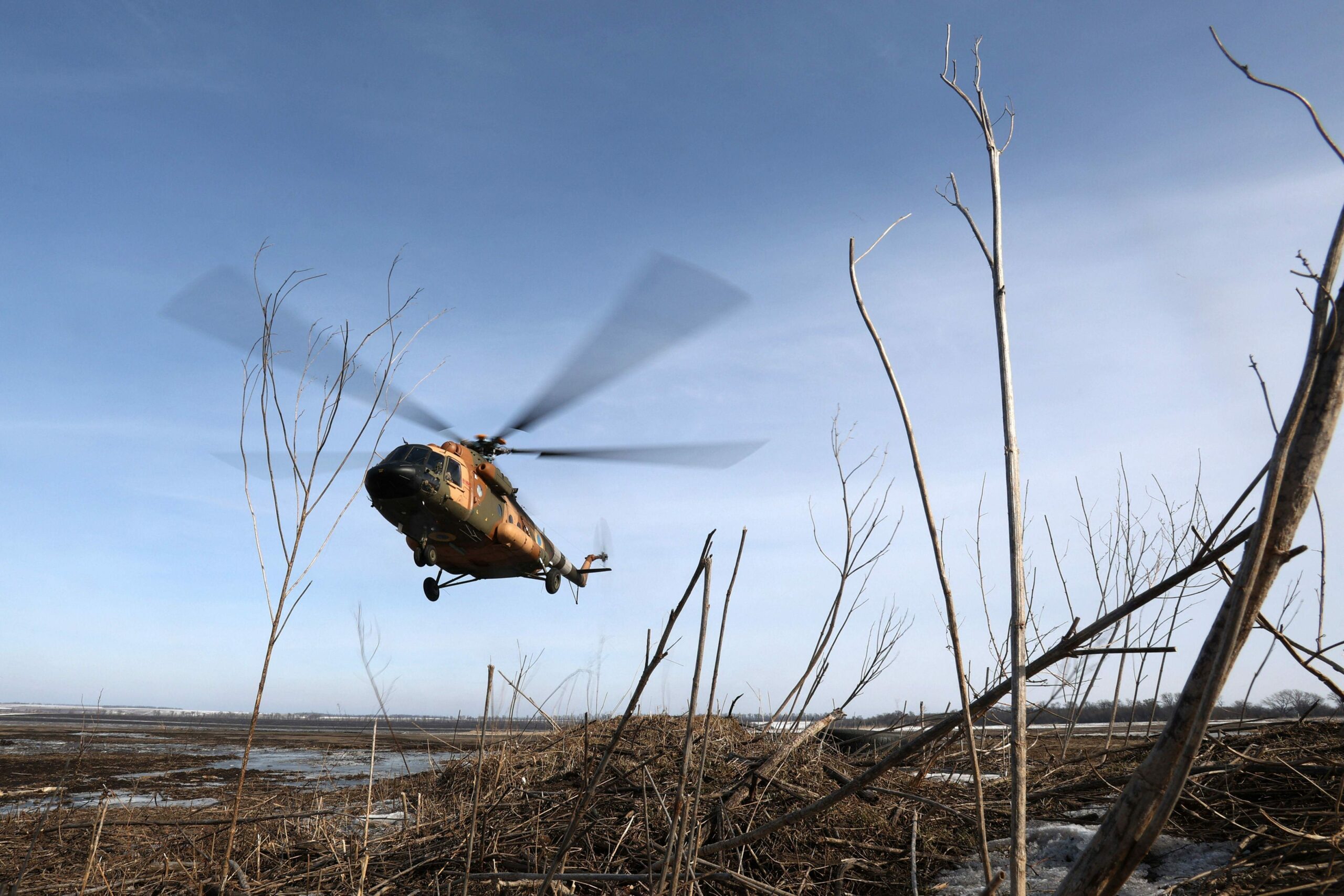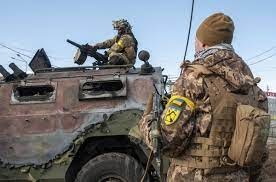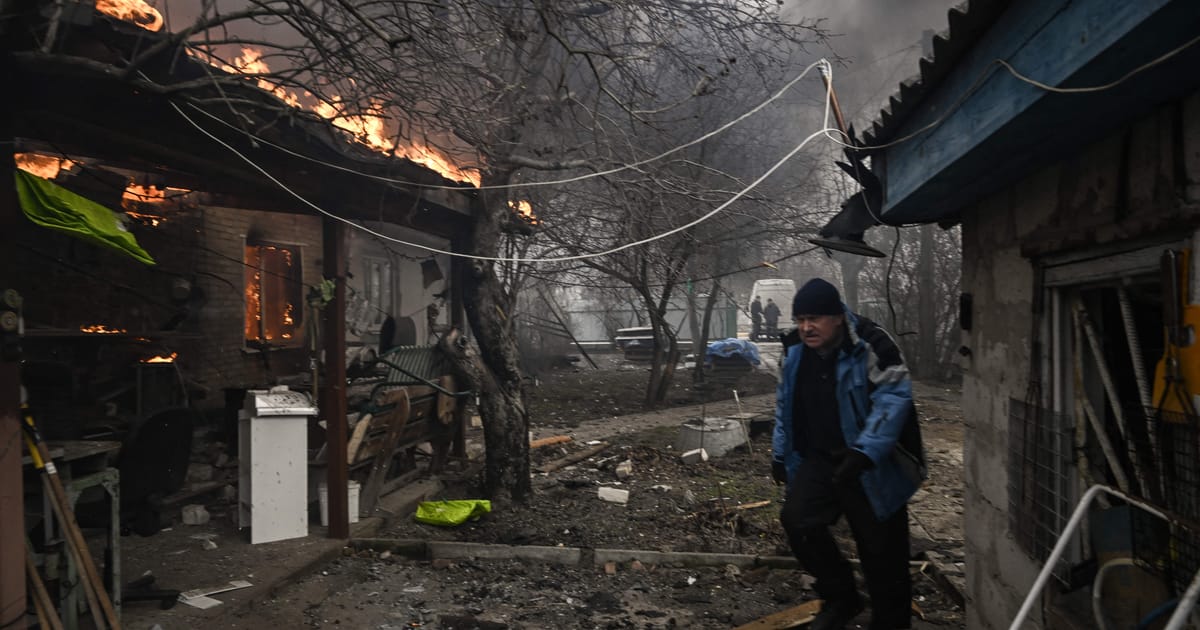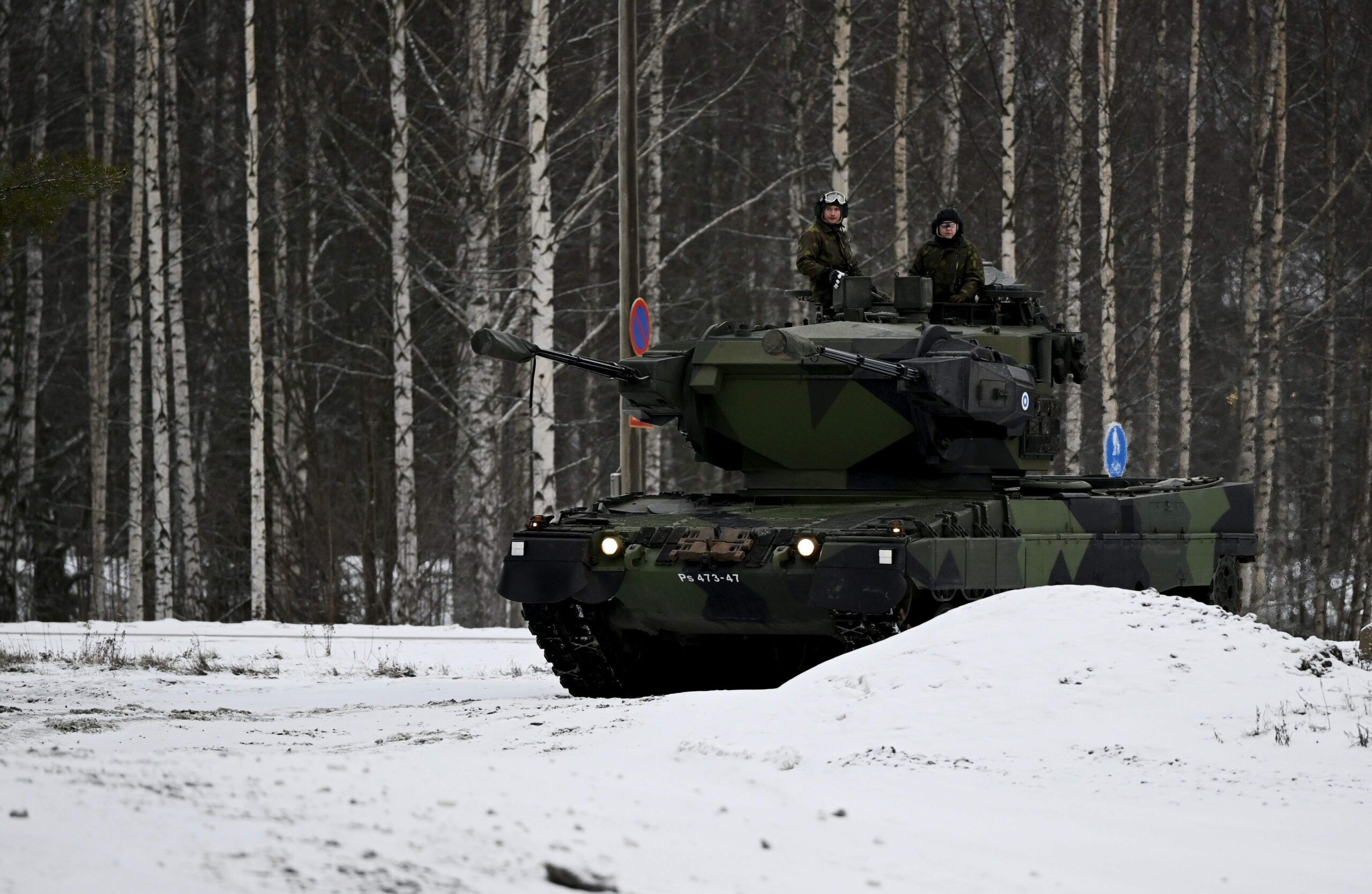In the early days of Russia's war on Ukraine the call went out for volunteers in Kyiv. These thousands of volunteers formed a new territorial-defense unit. A year later, the 241st Territorial Defense Brigade is now fighting around Bakhmut. The 241st and other territorial brigades ride in machine-gun-armed pickup trucks and captured Russian tractors and fight with whatever light weaponry, infrared sights, radios and drones they can get. The territorials include I.T. guys, bloggers, students, moms, dads, retirees. That they're all volunteers speaks to their morale, which is the most important factor in a military formation's endurance. Especially in the winter. Even
more especially in an urban battle. As the Russian army barreled toward Kyiv in the early days of Russia's wider war on Ukraine last February, the call went out for volunteers in the besieged capital city. These volunteers—thousands of them—formed a new territorial-defense unit.
A year later, that unit—the 241st Territorial Defense Brigade—is in the thick of the fighting in what is, at present, the bloodiest sector of the wider war. The snowy hills and ruined city blocks in and around Bakhmut, 30 miles north of Donetsk, the seat of the separatist Donetsk People’s Republic in eastern Ukraine's Donbas region.
The Russian army and its allies from The Wagner Group, a shadowy mercenary firm, since last spring have been trying—and so far failing—to capture Bakhmut, a city with a pre-war population of 70,000 that, aside from abutting a few roads, has little strategic value.
But it's in Bakhmut that Wagner has chosen to prove its human-wave assaults—thousands of under-trained ex-convicts throwing themselves at Ukrainian positions—
could work, and where the Russian army has chosen
to begin escalating its operations in Donbas in anticipation of what observers expect will be much wider winter offensive.
While the Ukrainian army has been rotating some of its best active heavy brigades into Bakhmut, lightly-armed territorials usually come along, lending their manpower and deepening battlefield experience to the active brigade's high technology and massive firepower.
The 241st and other territorial brigades ride in machine-gun-armed pickup trucks and captured Russian tractors and fight with whatever light weaponry, infrared sights, radios and drones they can get from the defense ministry in Kyiv or from private donors. The 241st like its sister brigades includes volunteers from all walks of life. I.T. guys.
Bloggers. Students. Moms. Dads. Retirees.
That doesn't mean the 241st's territorials aren't good soldiers. That they're all volunteers speaks to their morale, which arguably is the most important factor in a military formation's endurance. Especially in the winter. Even
more especially in an urban battle.
But a lack of firepower and armor puts the territorials at risk in an intensifying battle. It should come as no surprise that the 241st has suffered a lot of casualties around Bakhmut. Expect it to lose more men and women as the battle grinds toward a possible conclusion in coming days and weeks.
The 241st formed this spring as tens of thousands of everyday Ukrainians lined up to volunteer for military service. The initial training for the brigade's ragtag mix of citizen-soldiers was rushed and rudimentary. Videos from May depict masses of trainees scurrying across open fields, leaping into trenches and firing their rifles without even firmly seating the stocks in their shoulders.
But their enthusiasm was evident. “I don't fear when I know my goal,” a 241st territorial named Yevhen
told his brigade's public-affairs officer.
By August the direct threat to Kyiv had receded. The action was around the free city of Kharkiv in northeastern Ukraine, as well as in the south. It should come as no surprise that the 241st deployed battalions to Kharkiv while keeping some of its troops in Kyiv.
The air-defense teams the brigade deployed around the capital dragged some 80-year-old, water-cooled Maxim machine guns out of
very long-term storage and mounted them to pintles in the beds of their trucks. These air-defenders claimed they’ve shot down more than a few of Russia's Iranian-made Shahed suicide drones, including some they engaged
at night, but it's hard to verify those claims.
When Ukrainian brigades counterattacked around Kharkiv in late August, the Russians fell back—and left behind hundreds of intact armored vehicles. The territorials from the 241st scooped up at least two of the vehicles—a pair of MT-LB armored tractors—and added them to their arsenal. But the 241st still mostly relies on pickup trucks and private vehicles for its mobility.
A lack of protected mobility isn't fatal when a brigade occupies prepared fighting positions while defending an urban strongpoint. Small teams of infantry sneak among the ruins, take a few shots at the attacking Russians then hustle away to a new position. No armored fighting vehicles necessary.
But the lack of mobility becomes urgent when the Russians break through, as has happened north, east and south of Bakhmut in recent weeks. Shrugging off tens of thousands of casualties, the Russian army and Wagner have renewed their Bakhmut campaign.
One concerted Russian attack around the New Year cut off a 241st sub-unit, killed several territorials and left two of the brigade's wounded troopers stranded behind enemy lines. No time to escape before they were overrun.
For 11 days they struggled to survive. “We collected first-aid kits off our fallen brothers for dressings,”
said a territorial nicknamed “Nike.” “With almost no food or water, we anticipated the right moment to return.” By Jan. 12, the two starving territorials had succeeded in slipping past the Russians and returning to their brigade.
The Ukrainian army's elite 72nd Mechanized Brigade—armed with tanks, fighting vehicles, M-109 howitzers and shoulder-fired Javelin missiles—is doing a lot of the killing in and around Bakhmut. But the brigade's 3,000 troopers are too few to hold all of the trenches, bunkers and basement fighting positions. Not when the Russians are hurling many thousands of men at the city.
So the 241st fills in, stiffening Bakhmut's defenses until Kyiv decides it's killed enough Russians in Bakhmut and the nearly-lifeless ruins no longer are worth defending.
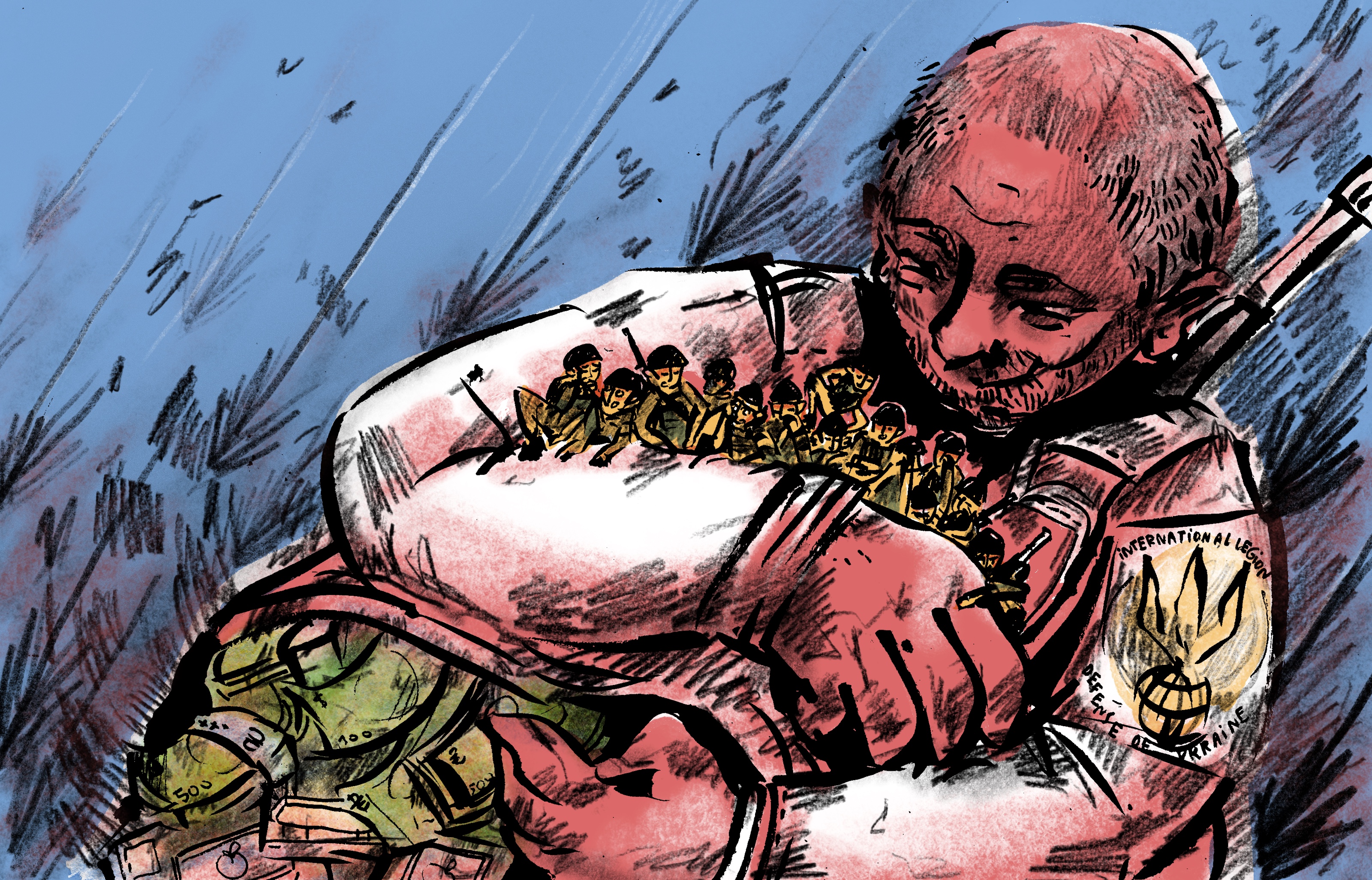
 kyivindependent.com
kyivindependent.com
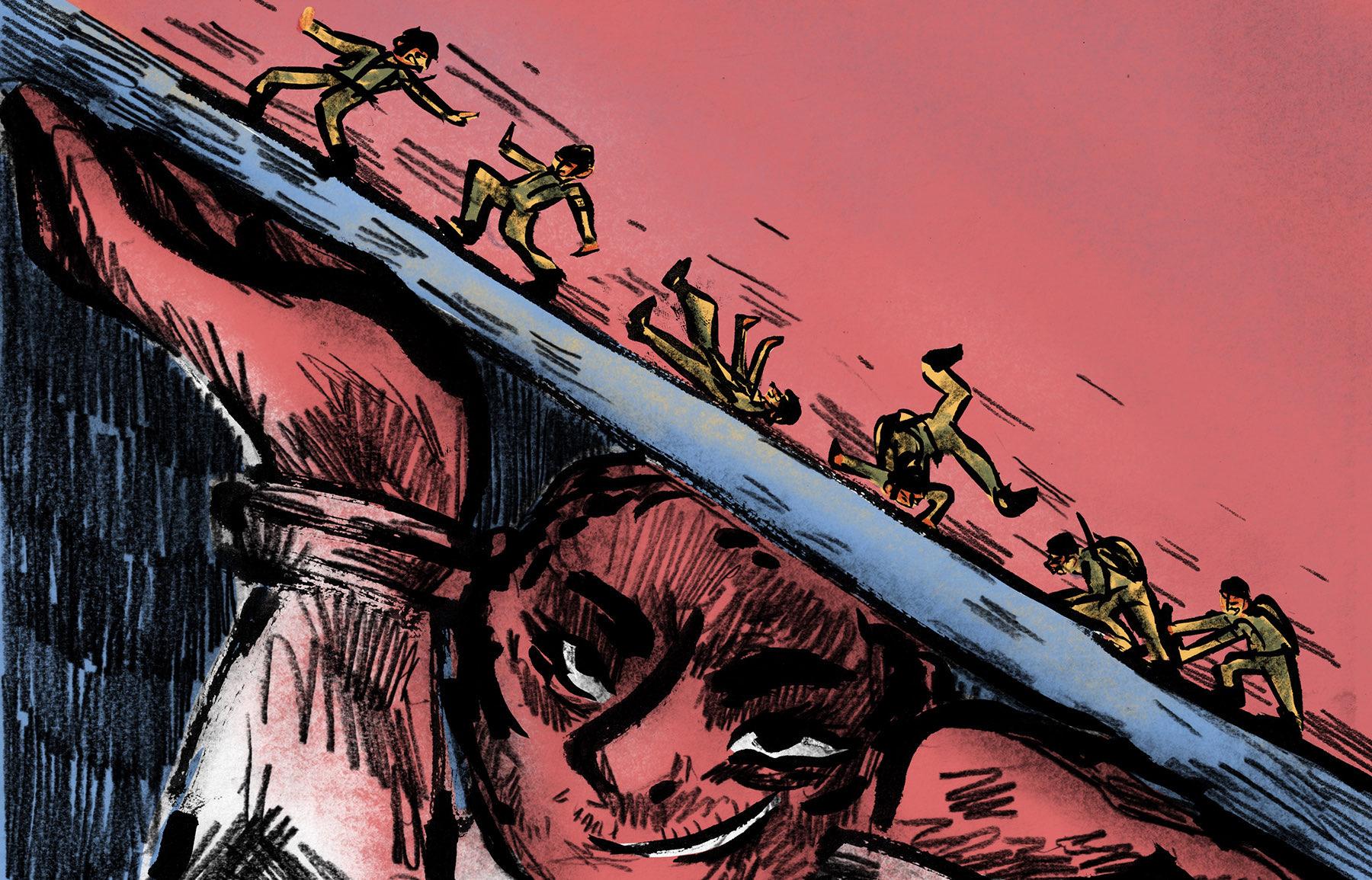
 kyivindependent.com
kyivindependent.com



